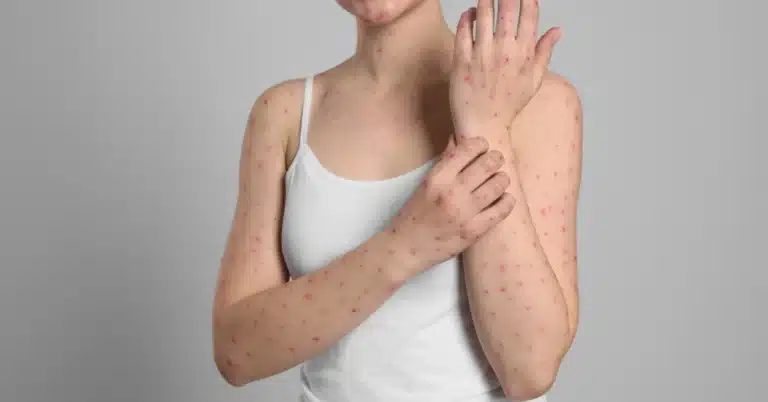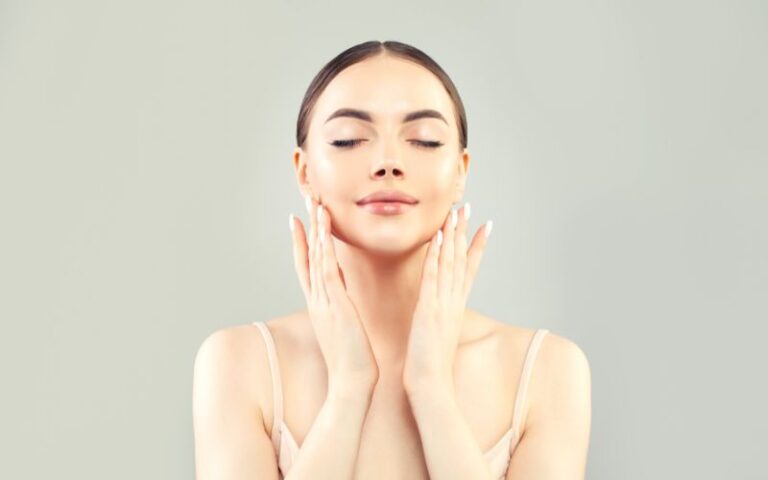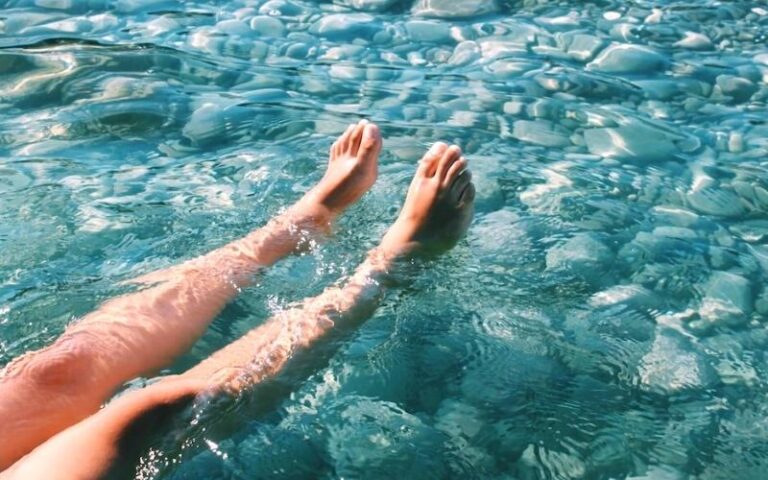Are Heat Rashes Contagious? Unveiling The Truth For Clear And Happy Skin

Have you ever experienced those annoying red bumps and itchy skin on a hot summer day? Don’t worry; you’re not alone. It might be a heat rash, also known as prickly heat. But here’s the big question: Are heat rashes contagious? Let’s dive into this topic and learn more about how to keep your skin clear and healthy.
Table Of Contents
- What Is A Heat Rash?
- Causes Of Heat Rashes
- Are Heat Rashes Contagious?
- Symptoms Of Heat Rashes
- Treatment For Heat Rashes
- Preventing Heat Rashes
- When To Seek Medical Attention
- Home Remedies For Soothing Heat Rashes
What Is A Heat Rash?
Before discussing whether heat rashes are contagious, let’s understand what they actually are. Heat rash, also called prickly heat (sweat rash or miliaria rubra), happens when sweat gets trapped in your sweat glands and can’t escape. This leads to red, itchy, and sometimes painful bumps on your skin. These bumps might look like tiny pimples or blisters, and they often appear in areas where your skin rubs together, like your neck, armpits, under the breast, or groin.
Causes Of Heat Rashes
Heat rashes are a common skin problem, especially during hot and humid weather. They occur when your sweat glands become blocked, forbidding sweat from reaching the surface of your skin. When sweat can’t escape, it builds up and causes irritation, leading to the characteristic red bumps. Wearing tight clothing that doesn’t allow your skin to breathe can also contribute to the development of heat rashes.
Are Heat Rashes Contagious?
The good news is that heat rashes are NOT contagious! That means you can’t catch a heat rash from someone else who has it.
Heat rashes happen when your sweat glands get blocked, usually due to hot and humid weather or wearing tight clothing that doesn’t let your skin breathe. Unlike other skin rashes, it’s not caused by germs or viruses, so you can’t pass it on to your friends or family.
Symptoms Of Heat Rashes
Identifying a heat rash is relatively straightforward due to its distinct characteristics. Common symptoms include:
- Red Bumps: Heat rashes often manifest as small, red bumps on the skin.
- Itchiness: The affected area can be intensely itchy, causing discomfort.
- Tiny Pimple-like Blisters: In some cases, the red bumps might develop into tiny pimple-like blisters.
- Prickly Sensation: You might experience a prickly or tingling sensation in the affected area.
- Heat: The skin over the rash might feel warmer than the surrounding areas.
Treatment For Heat Rashes
If you find yourself with a heat rash, don’t worry – it’s usually not serious and can go away on its own within a week or so. But if the rash is bothering you, there are some things you can do to help:
- Stay Cool: Avoid hot and humid places and wear loose, breathable clothing. This prevents further sweating and irritation.
- Keep Clean: Taking cool showers can provide relief and help keep your skin clean. Gently pat your skin dry after showering.
- Calamine Lotion: Applying calamine lotion to the affected area can help soothe the itchiness and reduce inflammation.
- Stay Hydrated: Consume ample amounts of water to keep your body cool and hydrated, which can aid in preventing excessive sweating.
- Avoid Heavy Creams: Thick lotions or creams can block your sweat glands even more. Opt for lightweight, non-comedogenic moisturizers.
- Give It Time: Sometimes, all your skin needs time to heal itself. Refrain from scratching the rash to prevent further irritation.
Remember, if the heat rash doesn’t improve or seems to worsen after a week, it’s a good idea to see a doctor for expert advice.
Preventing Heat Rashes
Of course, it’s always better to prevent heat rashes than to treat them. Here are some tips to help you keep your skin rash-free during those scorching summer days:
- Wear Breathable Clothes: Opt for light, loose-fitting clothing that allows air to circulate around your skin. Natural fabrics like cotton are great choices.
- Stay in the Shade: Whenever feasible, seek out shade, particularly during the peak hours of the day when it’s hottest.
- Use Fans or Air Conditioning: To prevent excessive sweating, keep your living spaces cool with fans or air conditioning.
- Take Cool Showers: After sweating, take a cool shower to wash away excess sweat and prevent clogged pores.
- Stay Hydrated: Drink ample amounts of water to help your body regulate its temperature and avoid dehydration.
- Avoid Overexertion: Avoid strenuous activities during the hottest times of the day to minimize sweating.
When To Seek Medical Attention
While heat rashes are usually harmless and go away on their own, there are instances when you should seek medical attention:
- If the rash doesn’t improve after a week.
- If the rash becomes increasingly painful, swollen, or starts oozing pus.
- If you develop a fever, this could indicate an infection.
A doctor can provide proper guidance and treatment for severe or prolonged symptoms.
Home Remedies For Soothing Heat Rashes
Dealing with a heat rash can be uncomfortable. Still, several tried and tested home remedies can provide relief and help your skin heal faster. Here are a few natural solutions you can experiment with:
- Cool Compress: Utilizing a chilled and damp cloth on the affected region can assist in decreasing inflammation and offer instant relief from itching. Just ensure the cloth is clean and not too cold to avoid shocking your skin.
- Unscented Talcum Powder: Dusting the affected area with unscented talcum powder can help keep the skin dry and reduce friction, which may alleviate discomfort.
- Oatmeal Bath: Adding colloidal oatmeal to a lukewarm bath can help soothe itchy skin. Oatmeal has anti-inflammatory properties that can provide relief from irritation.
- Aloe Vera Gel: It is renowned for its calming and cooling properties. Applying fresh aloe vera gel or a store-bought gel can help calm the itchiness and reduce redness.
- Cornstarch Paste: Mixing cornstarch with a bit of water to create a paste can help absorb excess moisture and sweat from your skin. Gently spread the paste to the affected area, let it dry, and then rinse it off with cool water.
- Chilled Cucumber Slices: Cucumber has high water content and can offer a cooling sensation when applied to the skin. Place chilled cucumber slices on the heat rash for relief.
- Chamomile Tea Compress: Brew chamomile tea, let it cool, and then soak a clean cloth in the tea. Apply the cloth as a compress to the affected area. Chamomile has anti-inflammatory properties that can help ease itching.
- Baking Soda Bath: Incorporating a small quantity of baking soda into a lukewarm bath can help balance your skin’s pH and reduce irritation.
- Coconut Oil: Applying a thin layer of coconut oil to the heat rash can help moisturize your skin and reduce itchiness. Coconut oil also has anti-inflammatory properties.
- Witch Hazel: Witch hazel possesses natural astringent properties that can effectively ease skin irritation. Apply witch hazel using a cotton ball to the affected area for relief.
- Tea Tree Oil: Thoroughly mix tea tree oil with coconut or olive oil, and gently apply a small quantity to the heat rash. Tea tree oil boasts antibacterial and anti-inflammatory properties.
- Sandalwood Paste: Mixing sandalwood powder with a little water to form a paste and then applying it to the affected area can provide a cooling and soothing sensation.
- Neem Paste: Neem, known for its antibacterial and anti-inflammatory properties, can be ground into a paste and applied to the rash for relief.
Remember, before trying any home remedy, it’s a good idea to do a patch test on a small area of your skin to ensure you don’t have an allergic reaction. If your symptoms worsen or if you have concerns, it’s best to consult a medical professional.
Conclusion
So, there you have it! Heat rashes are not contagious like viral rashes – they’re just your body’s way of telling you it’s a bit too hot out there. By taking good care of your skin, staying cool, and following these tips, you can enjoy sunny days without worrying about heat rashes.
Here’s to clear, happy, and healthy skin! Remember, prevention is the key, so keep these strategies in mind to have a comfortable and rash-free summer. Stay cool, stay hydrated, and enjoy the warmth while keeping your skin in its best condition.
FAQs
Q: Are heat rashes contagious?
A: No, heat rashes are not contagious. They are caused by blocked sweat glands due to heat and humidity, not by germs or viruses.
Q: Can I catch a heat rash from someone else?
A: No, you cannot catch a heat rash from someone else. Heat rashes develop due to your skin’s response to heat and sweat.
Q: Are heat rashes caused by a virus or bacteria?
A: No, heat rashes are not caused by viruses or bacteria. They occur when sweat glands become blocked due to hot weather or tight clothing.
Q: What are the symptoms of heat rashes?
A: Heat rashes often manifest as small red bumps, sometimes with an itchy or prickly sensation. They can resemble tiny pimples or blisters.
Q: How long does it take for a heat rash to go away?
A: Heat rashes usually go away on their own within a week. Keeping the affected area cool and dry can help speed up healing.
Q: Can I treat a heat rash at home?
A: Yes, mild cases of heat rash can be treated at home. Measures like staying cool, using calamine lotion, and wearing breathable clothing can provide relief.
Q: Is calamine lotion effective for heat rashes?
A: Yes, calamine lotion can be effective in soothing the itchiness associated with heat rashes. It helps reduce irritation and provides a cooling sensation.
Q: What’s the difference between a heat rash and an allergy rash?
A: Heat rash is caused by sweat gland blockage due to heat and humidity. On the other hand, allergy rashes are immune responses to allergens and can vary in appearance and causes.
Q: Can babies get heat rashes?
A: Yes, babies can get heat rashes, especially in areas where their skin folds. Keeping them cool, dressing them in breathable fabrics, and avoiding overdressing can help prevent heat rashes.
Q: When should I see a doctor for a heat rash?
A: If the heat rash doesn’t improve after a week, becomes infected, or if you experience severe discomfort, it’s a good idea to consult a doctor for proper diagnosis and treatment.
References
https://my.clevelandclinic.org/health/diseases/22440-heat-rashprickly-heat
https://www.nhs.uk/conditions/heat-rash-prickly-heat
https://www.mayoclinic.org/diseases-conditions/heat-rash/diagnosis-treatment/drc-20373282
https://www.michiganmedicine.org/health-lab/how-manage-your-summer-rash





